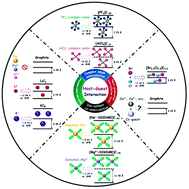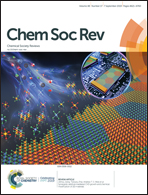Intercalation chemistry of graphite: alkali metal ions and beyond
Abstract
Reversibly intercalating ions into host materials for electrochemical energy storage is the essence of the working principle of rocking-chair type batteries. The most relevant example is the graphite anode for rechargeable Li-ion batteries which has been commercialized in 1991 and still represents the benchmark anode in Li-ion batteries 30 years later. Learning from past lessons on alkali metal intercalation in graphite, recent breakthroughs in sodium and potassium intercalation in graphite have been demonstrated for Na-ion batteries and K-ion batteries. Interestingly, some significant differences proved to exist for the intercalation of Na+ and K+ into graphite compared with the Li+ case. Such different host–guest interactions are unique depending on the host materials and electrolytes, which greatly contribute to a deeper understanding of intercalation-type electrode materials for next generation alkali metal ion batteries. This review summarizes significant advances from both experimental and theoretical calculations with a focus on comparing the intercalation of three alkali metal ions (Li+, Na+, K+) into graphite and aims to clarify the intimate host–guest relationships and the underlying mechanisms. New approaches developed to achieve favorable intercalation coupled with the challenges in this field are also discussed. We also extrapolate alkali metal ion intercalation in graphite to mono-/multi-valent ions in layered electrode materials, which will deepen the understanding of intercalation chemistry and provide guidance to explore new guests and hosts.



 Please wait while we load your content...
Please wait while we load your content...